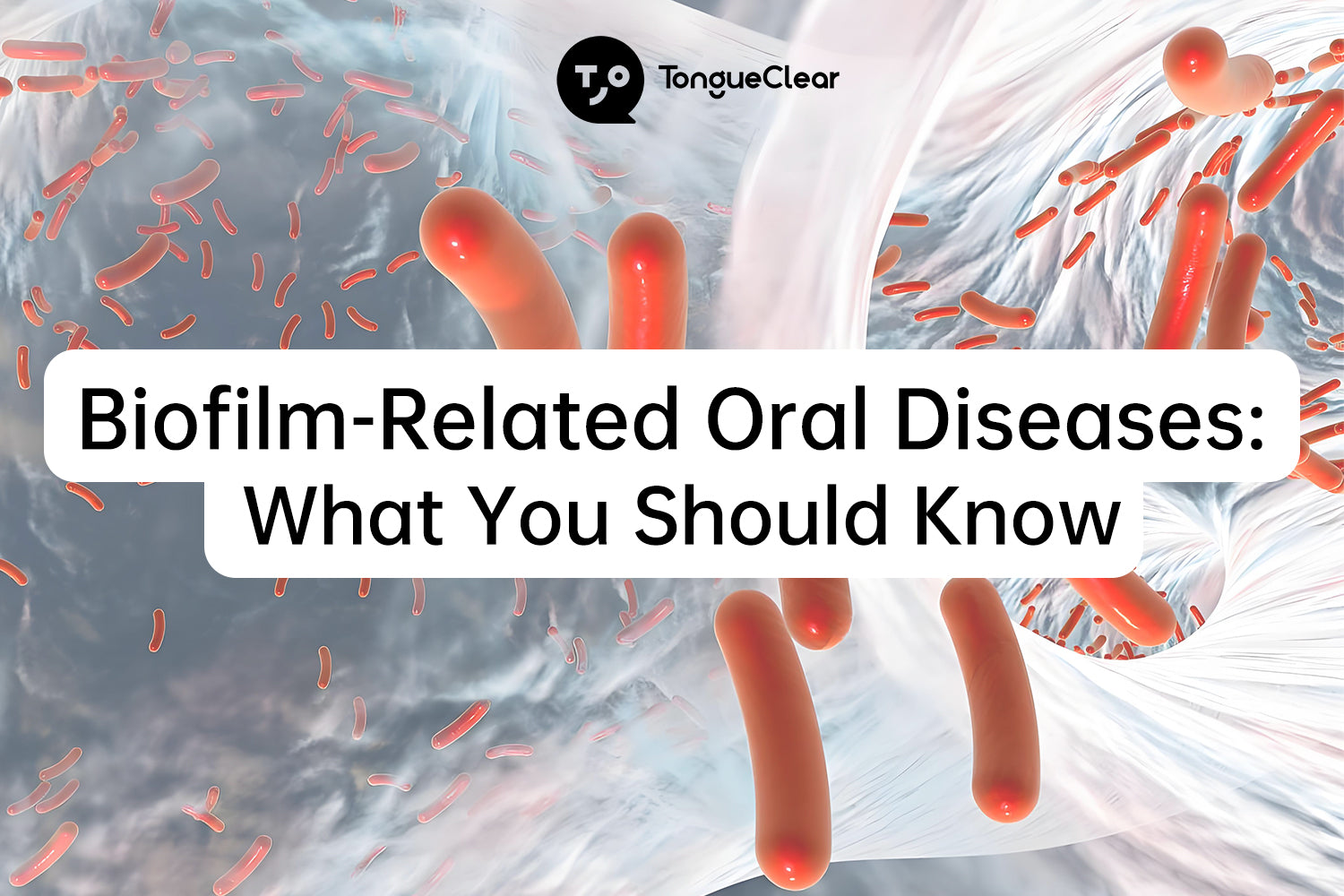
Biofilm-Related Oral Diseases: What You Should Know
Oral health is an important part of physical health. Oral health is related to many factors, among which the impact of oral biofilm on oral health is the most easily overlooked by humans. Biofilm is a complex aggregate of microorganisms attached to the surface of the mouth and is also the main factor causing various oral health problems. Understanding the impact of biofilm on oral health and learning how to manage it is essential to prevent serious oral diseases.
What is oral biofilm?
Oral biofilm is a sticky, colorless film of bacteria that forms on teeth and other surfaces in the mouth. Biofilm begins to form within minutes of cleaning your teeth, and if not removed regularly, it gradually thickens and forms a hard, hard plaque. Biofilm provides a breeding ground for bacteria, which can lead to a variety of oral health problems.
Common oral diseases associated with biofilm
1. Gingivitis: Gingivitis is an inflammation of the gums caused by biofilm accumulation. Early symptoms include red and swollen gums that may bleed when brushing or flossing. If left untreated, gingivitis may progress to more serious gum disease.
2. Periodontitis: This is an advanced form of gum disease that affects the supporting tissues and bones of the teeth. If not managed correctly, periodontitis may lead to tooth loss. Bacteria in biofilms produce toxins that damage gums and bones, exacerbating the condition.
3. Caries: Bacteria in biofilms produce acids that corrode tooth enamel, leading to tooth decay. If left untreated, tooth decay may cause pain, infection, and even tooth loss.
4. Bad breath: Bacteria in biofilms produce volatile sulfide compounds (VSCs), which cause bad breath. Persistent bad breath is often a sign of biofilm accumulation.

Daily Oral Hygiene
- Clean teeth: Brush your teeth at least twice a day using the Bass method, using fluoride toothpaste and a soft-bristled toothbrush to avoid damaging the gums.
- Clean between teeth: Use dental floss to remove food debris and biofilm between teeth and under the gums every day, or use Tongueclear oral finger cleaning wipes to manually remove bacterial biofilm and food debris from the teeth, gums, tongue and other parts of the mouth.
- Full oral cleaning: Use Tongueclear oral mucosa gel to reduce biofilm and bacteria in the mouth. (Long-term use of traditional mouthwash will disrupt the balance of oral flora)

Professional dental care
- Regular Checkups: See your dentist regularly for checkups and professional cleanings. Your dentist can remove hardened tartar that can’t be removed by brushing and flossing.
- Scaling and root planing: For advanced biofilm-related disease, your dentist may recommend scaling and root planing to clean the roots of your teeth and remove biofilm beneath the gums.
Lifestyle changes
- Diet: Reduce your intake of sugary foods and drinks, as sugars promote the growth of bacteria in biofilms.
- Stay hydrated: Drink plenty of water to help flush away food particles and bacteria.
- Avoid tobacco: Smoking and chewing tobacco increases the risk of biofilm-related diseases and other oral health problems.
Professional oral bacterial biofilm removal products and methods
- Laser treatment: Laser can be used to remove biofilm and treat periodontal disease with less discomfort.
- Tongueclear oral mucosal gel: Contains lysozyme and glycosidase. Glycosidase can effectively decompose sugar in the mouth, and lysozyme can dissolve bacteria in the mouth. The combination of the two can effectively decompose biofilm and prevent its formation.
- Tongueclear airbag oral cleaner: Traditional cleaning tools cannot meet the cleaning needs of all parts of the mouth, and cannot truly remove oral bacterial biofilm. At the same time, because the mouth is soft and sensitive, Tongueclear has developed the Tongueclear airbag oral cleaner based on the difficulties faced by current oral cleaning tools. The brush head of this product adopts a 3D airbag design and is made of food-grade liquid silicone. The combination of the two allows the brush head to fit the mouth to the greatest extent and can deform with different parts of the mouth so that comprehensive cleaning can be performed. At the same time, this product can not only clean teeth and tongue, but also gums, sublingual, upper and lower jaws and other oral areas, which perfectly solves the pain points of traditional cleaning tools.

Share









